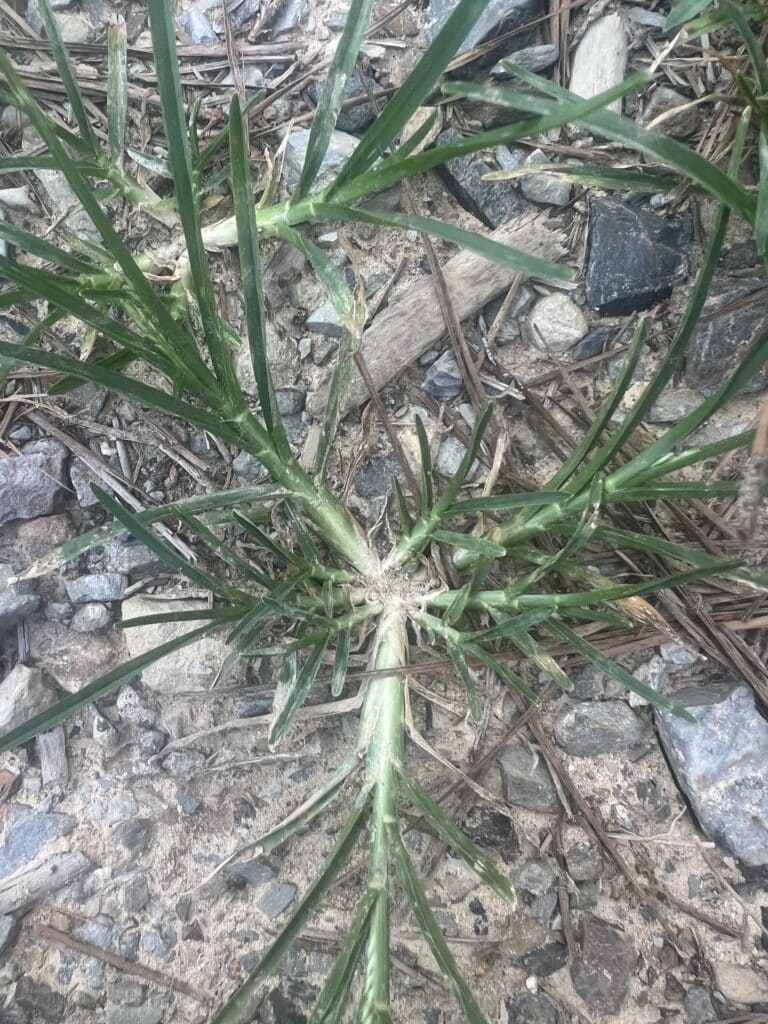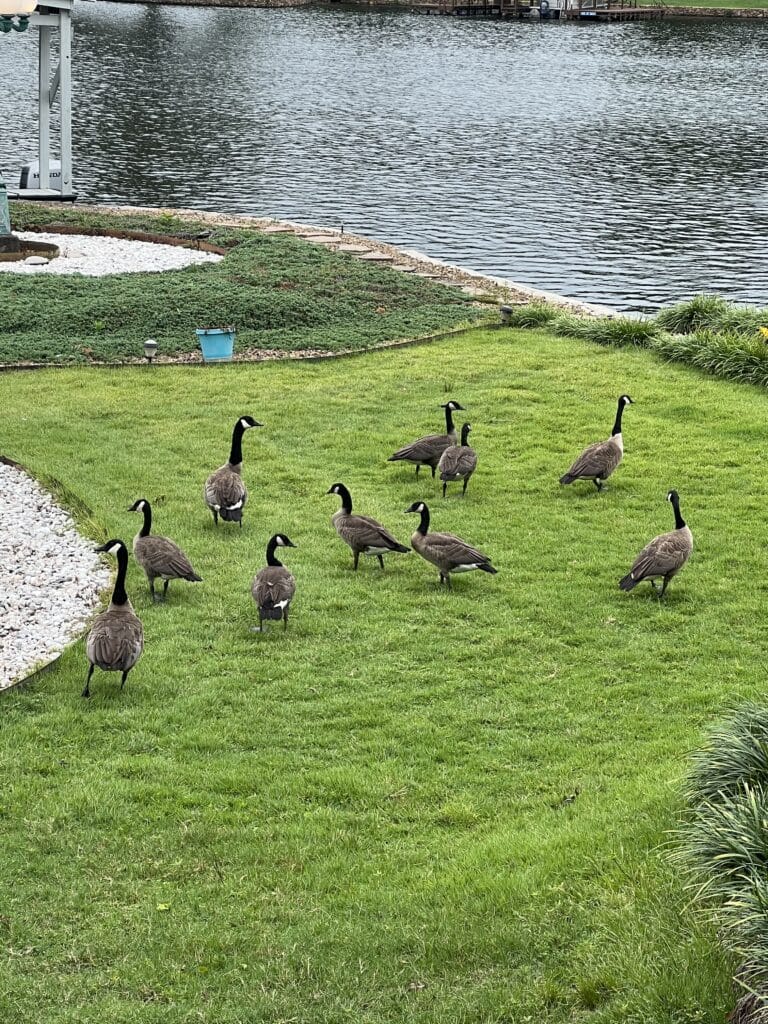How to identify goose grass.
Goose grass, also known as Eleusine indica, is a common weed that can be found in lawns and gardens. It is an annual grassy weed that spreads quickly and can be quite invasive if left unchecked.
This weed is often a problem in lawns because it competes with grass for nutrients, water, and sunlight. It can quickly take over an area and create unsightly patches in the lawn. Goose grass is also known for its ability to produce large amounts of seeds, which can spread easily and lead to further infestations.
Goose grass identifying characteristics
Goose grass has a distinctive appearance with white flat stems, broad leaves, and a prostrate growth habit. It can grow up to 2 feet tall and has slivery light green color stems with darker green leaves.

As goose grass continues to grow it eventually begins to produce vertical leaves that hide and shelter the silvery center. Left unmowed goose grass can grow up to two foot tall.

The seed heads of goose grass have seed heads arranged in a herringbone pattern.

Where does goose grass grow?
Goose grass is a weed that can grow in a variety of soil types. It is commonly found in lawns and gardens with well-drained soil. However, goose grass can also tolerate compacted soil and areas with poor drainage. It is important to note that while goose grass can grow in different soil conditions, it thrives in areas with low fertility and high moisture. Therefore, implementing proper lawn care practices, such as regular mowing, watering, and fertilizing, can help promote a healthy lawn that is less susceptible to goose grass infestations.
When does goose grass germinate?
Goose grass is a warm season weed that typically germinates in the spring when soil temperatures reach around 60 to 65 degrees Fahrenheit (15 to 18 degrees Celsius). However, the exact time goosegrass germinates can vary depending on the specific climate and location.
It is important to note that goose grass is an annual weed, meaning it completes its life cycle within one year. Therefore, understanding the germination period can help in implementing effective weed control strategies, such as applying pre-emergent herbicides before the seeds have a chance to sprout.
Goose grass control.
Goose grass can be prevented with a properly timed pre emergent herbicide. If its passed the window to prevent this weed it can also be treated with a post emergent herbicide.
These selective herbicides can kill the targeted weed without killing the surrounding turf.
When it comes to maintaining a weed-free lawn, it is crucial to understand that the most effective method is to cultivate a dense and healthy turf. This means that the grass should be thick and lush, leaving little to no room for weeds to take root and thrive. While many homeowners may be tempted to solely rely on herbicides and other chemical treatments, it is important not to underestimate the significant advantages of adopting proper mowing habits, watering practices, and fertilization techniques.
First and foremost, mowing the lawn correctly plays a vital role in weed control. Regular and consistent mowing at the appropriate height helps to promote a dense turf by encouraging lateral growth and discouraging weed growth.
It is recommended to mow the grass at a height that allows it to shade the soil, preventing weed seeds from germinating and establishing themselves. Additionally, it is crucial to ensure that the lawnmower blades are sharp, as dull blades can tear the grass instead of cutting it cleanly, making it more susceptible to weed invasion.
Watering habits also play a significant role in maintaining a healthy lawn and preventing weed growth. Proper watering practices involve providing the grass with deep and infrequent watering rather than frequent shallow watering.
Deep watering encourages the grass roots to grow deeper into the soil, making them more resilient and better able to compete with weeds. On the other hand, shallow watering promotes shallow root growth, leaving the grass vulnerable to weed competition. It is important to water the lawn early in the morning to allow the grass blades to dry before evening, as prolonged moisture can create favorable conditions for weed growth.
Fertilization is another essential aspect of weed control. A well-fertilized lawn provides the grass with the necessary nutrients to grow vigorously, creating a dense turf that naturally suppresses weed growth. However, it is crucial to apply the right type and amount of fertilizer at the appropriate time.
Over-fertilization can lead to excessive grass growth, which can weaken the turf and make it more susceptible to weed invasion. It is recommended to conduct a soil test to determine the specific nutrient needs of the lawn and to follow a fertilization schedule that aligns with the grass’s growth patterns.
In conclusion, while herbicides and other chemical treatments can be effective in controlling weeds, it is important to remember that the foundation of a weed-free lawn lies in cultivating a dense and healthy turf. Proper mowing habits, watering practices, and fertilization techniques are essential in creating an environment where the grass can thrive and outcompete weeds.

